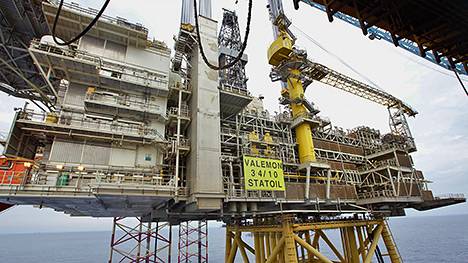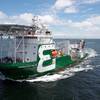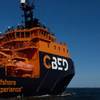Valemon Topsides Installed
On Monday, July 28, the topsides were lifted into place on the steel jacket on the Valemon field in the North Sea. Produced by Samsung Heavy Industries this is the first Statoil topsides built in South Korea.
The structure sailed from the yard on June 15 this year, and after a quick stop in Åmøyfjorden, Stavanger, last Saturday, it headed out to the field. The transportation to Norway took 40 days.
“This is a major milestone for the project, the most important milestone of course being start-up towards the end of the year,” said Bjørn Laastad, vice president for Valemon field development.
The lift of the 9,750-metric-ton topsides took two hours, and was performed slightly earlier than initially assumed.
Thanks to good weather in the North Sea this summer, the Saipem 7000 crane vessel was available for lifting once the topsides arrived in Norway. The weather was favorable also when the crane vessel and the topsides arrived on the field. “We had almost perfect lifting conditions,” Viktor Nilsen-Nygaard, head of Valemon transportation and installation, reports from the crane vessel.
After the topsides were lifted into place, the flare boom was installed.
The more than two-year planning period has included very thorough safety evaluations for all phases of the lifting operation. From mid-June the West Elara rig pre-drilled production wells through the jacket on the field.
The rig’s derrick has been pulled in during the lifting operations. During the lift the distance between the topsides and rig was just five meters.
The well operations will resume in mid-October. According to plan three wells will be producing when the field comes on stream at the end of the year. The rig’s job, however, will be far from finished. Drilling on the field is planned to continue until 2017.
In the months ahead commissioning work will take place on the field. Wells will be hooked up with production facilities on board, sea water pumps will be installed, and electricity, water and pipelines will be connected.
Valemon will be powered from Kvitebjørn, and the cable has already been laid on the seabed. So have the pipelines that will be transporting gas and condensate to Heimdal and Kvitebjørn, respectively.
“Some work remains before we are ready for start-up, but we are on track,” Laastad said.
In order to accommodate everyone involved in the commissioning and hook-up work Statoil has chartered a flotel. The project thus has bed capacity for some 400 people, which is the number expected to be offshore, at least in the most hectic period. But there is one thing that cannot be planned – and that’s the weather.
“If we get much poor weather the flotel must be disconnected in periods. Poor weather also creates problems for the helicopter traffic, and may delay the commissioning work. So far, however, we have been lucky with the weather, and I hope this continues,” Laastad said.
Valemon will utilize existing installations and pipelines for gas and condensate export. The gas from Valemon will be transported through the existing pipeline from Huldra to Heimdal, which is a hub for transportation further to the gas markets in Europe.
The condensate will be piped to Kvitebjørn for stabilization, and transported from there to the Mongstad refinery near Bergen.
This is a win-win situation which reduces the costs for the Valemon development, and gives Heimdal and Kvitebjørn new tasks. At Heimdal major upgrading has taken place which significantly extends the platform’s life.















